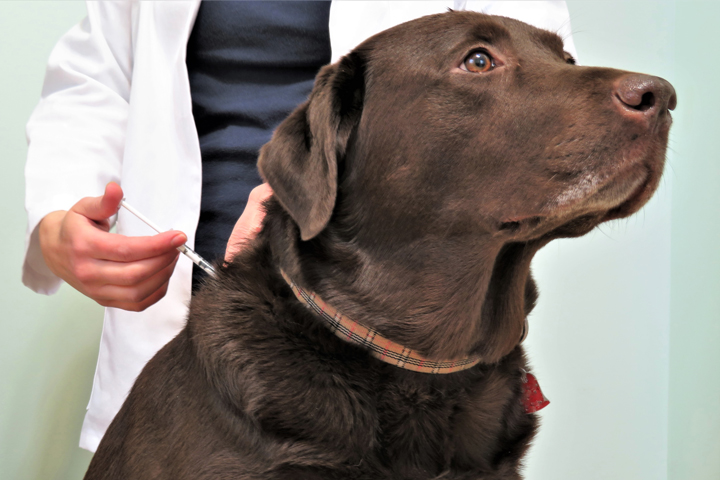We are all aware of the fact that our furry friends don’t live as long as we would like them to. That means that we must make the most out of every minute we can spend with them.
Just like humans, dogs are prone to developing a wide range of conditions and diseases. Therefore, it’s imperative that we do everything we can to ensure they live long, healthy, and happy lives.
Diabetes in dogs is like diabetes in humans. Diabetes in dogs, also known as canine diabetes, is a disease that occurs when their bodies can no longer produce insulin. Although the disease is treatable, it is not curable. If your pet has developed this condition, they will require life-long treatment and an active fitness regime.
The condition normally develops in dogs between the ages of 4 and 14, however, most pets are only diagnosed between the ages of 7 and 10. Another interesting fact is that diabetes is twice as likely to occur in female dogs. As with humans, the main risk factor behind this condition is obesity.
First things first, what are some of the most common symptoms of diabetes in dogs? These include:
- Lack of appetite
- Cloudy eyes
- Abnormal breathing
- Lethargy
- Vomiting without apparent cause
- Loss of weight despite normal eating habits
- Chronic or persistent infections, such as urinary tract infections
- Excessive drinking and increased urination
If you notice any of these symptoms in your dog, it’s recommended that you book an appointment with your local veterinarian as soon as possible. If you catch onto these symptoms quickly, the chances of giving your pet a better life are much higher.
There are also some pure breeds that are more susceptible to developing diabetes because of their genetic make-up. These include:
- Poodles
- Pugs
- Fox Terriers
- Beagles
- Bichons Frises
- Dachshunds
- Miniature Schnauzers
For those who already know their dog has diabetes and are wondering how to manage the disease, there are a few things you should consider.
Table of Contents
Provide a Controlled Diet
One of the most important things you can do for your dog with diabetes is ensure they are receiving a controlled diet. For the best results, you should only feed them food for diabetic dogs. Your vet will be able to provide you with guidance regarding a diabetic meal plan.
Similarly, you should avoid any excess snacks, especially those that are made with fructose or molasses. If you really want to give them a treat, we suggest carrots, snap peas, or homemade dehydrated meat.
Monitor Glucose Levels
In essence, managing diabetes in dogs is all about monitoring the level of glucose found in their blood. Once you have an accurate idea of your pet’s blood sugar levels, you can begin the insulin therapy treatment.
Glucose levels can be evaluated in two distinct ways. The first, and most effective method, is by conducting a blood test. This can be done at your local vet clinic or with a portable glucometer. Alternatively, you can test for the presence of glucose through urine samples, however, this may not deliver accurate results.
Start Insulin Therapy
Insulin therapy involves managing blood sugar levels and administering an insulin shot to keep the glucose level within a specified range. This subcutaneous injection can be administered by using an insulin pen or a needle and syringe.
After beginning insulin therapy, you should start to notice that your dog no longer drinks as much water or urinates as frequently. It’s important to keep track of these behaviours so you can report back to your vet.
Keep Your Pet Active
Another way to keep your pet feeling healthy is by encouraging physical activity. If your dog is a healthy weight, then you should stick to the usual levels of exercise. If your dog is overweight, you could encourage a controlled weight loss through added physical activity.
However, it’s important to note that abnormally high levels of energy consumption could result in your pet burning more glucose than usual which will lead to lower blood sugar levels. Therefore, it’s important to consult with your veterinarian before starting an exercise regime.
Consider Spaying Your Pet
Spaying your pet if they have diabetes is only necessary for female dogs. Your vet may recommend this as part of their treatment. This is because female dogs produce a sex hormone known as progesterone. Progesterone can interfere with the production of insulin, so removing the sex organs can help your pet feel better.
Go For Regular Vet Check-ups
As with any medical condition, going for regular check-ups is essential. No matter how much you research, you’ll never be as qualified as your veterinarian. They can help you manage your dog’s diabetes in the most effective way possible.
If your dog does suffer from diabetes, it’s recommended that you visit your local vet at anywhere from two to four times a year. This will also help any further complications from arising in the future.
Track Their Behaviour
When you visit the vet for regular check-ups, they will ask you some questions about your dog’s behaviour. Therefore, it’s important that you keep note of these so that you can report back. Watch out for how often your dog drinks water, urinates, and if they gain weight. Similarly, you should look out for other symptoms that may be indicative or complications in the diabetes diagnosis.
Sadly, there is no way to reverse diabetes in your dog. Therefore, prevention is the best cure for this disease. The best way you can prevent this is by providing your dog with enough exercise and ensuring they eat a healthy diet. Try to feed your dog consistent meals throughout the week, with little carbohydrates and a high percentage of protein instead. Similarly, it’s imperative that you practice portion control. If you’re not sure how much and how often you should be feeding your pet, consult with your vet.




